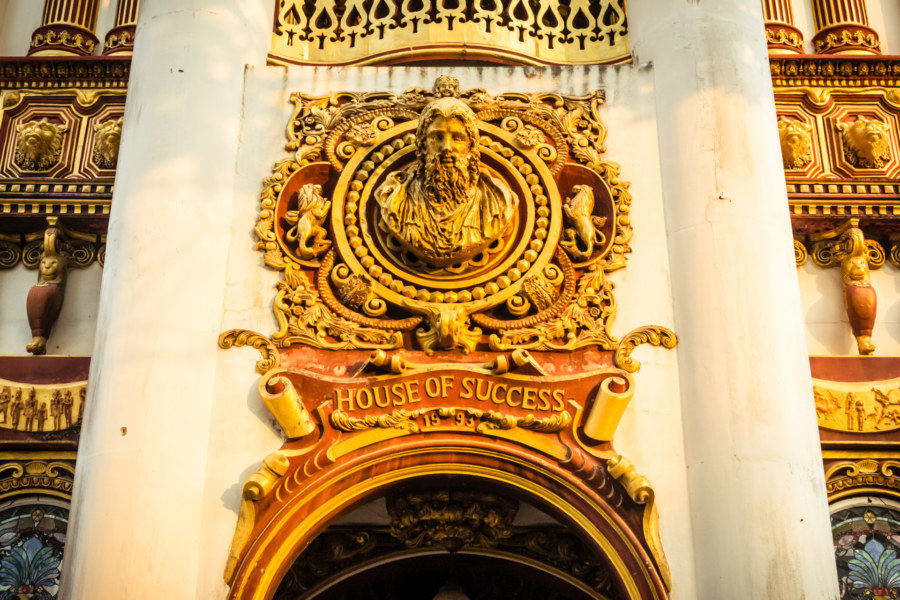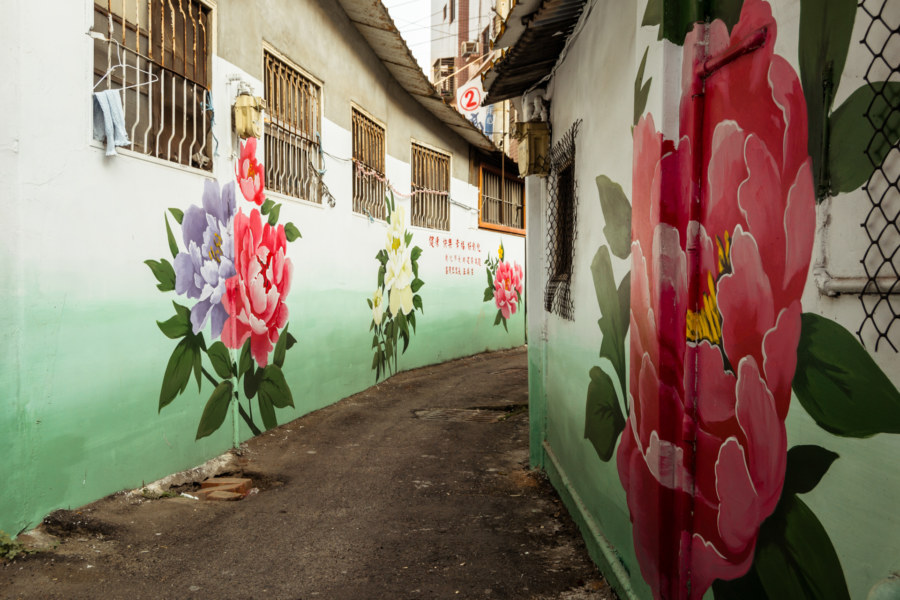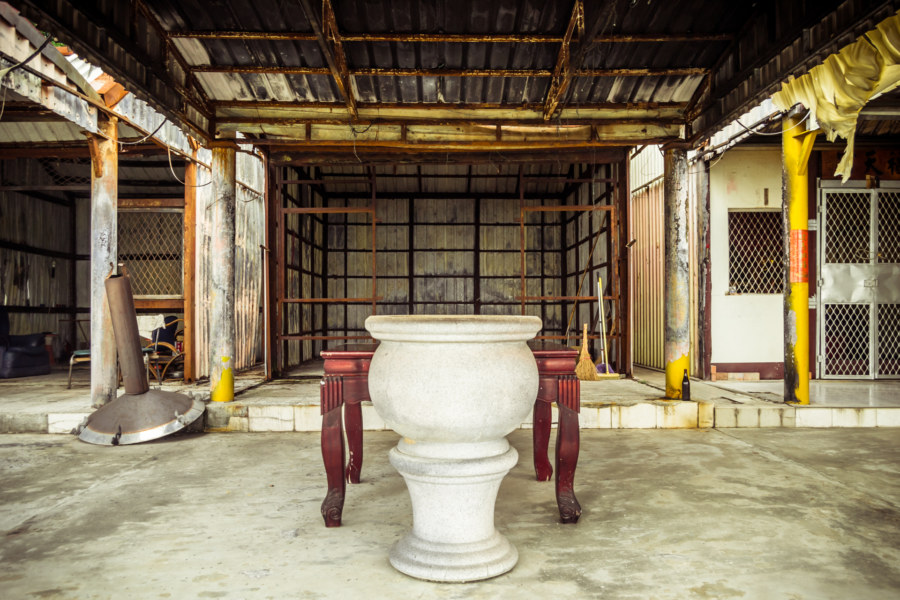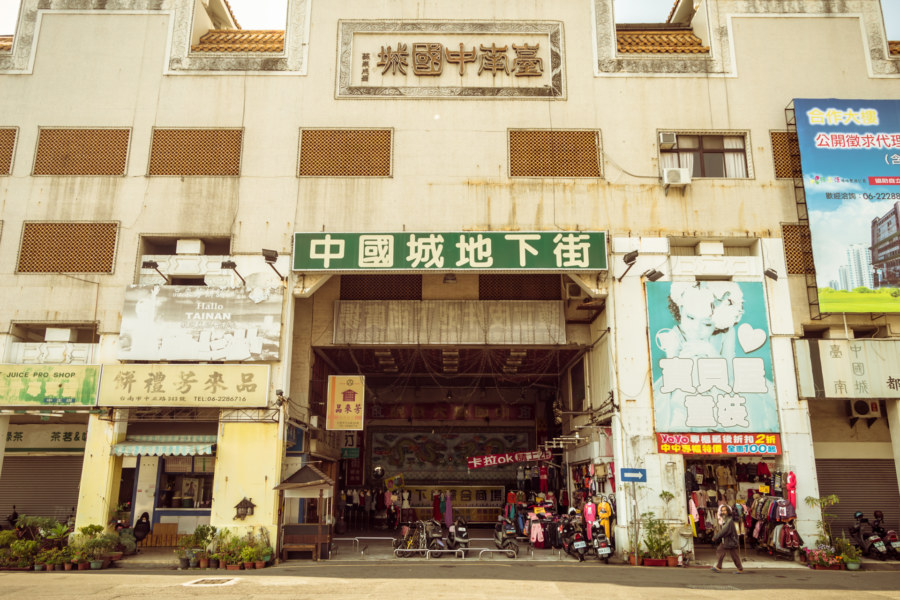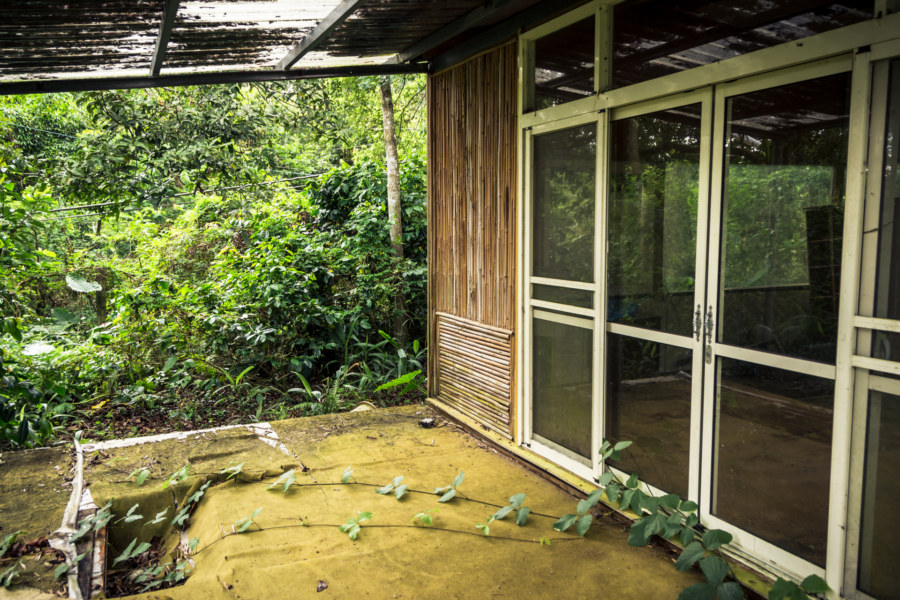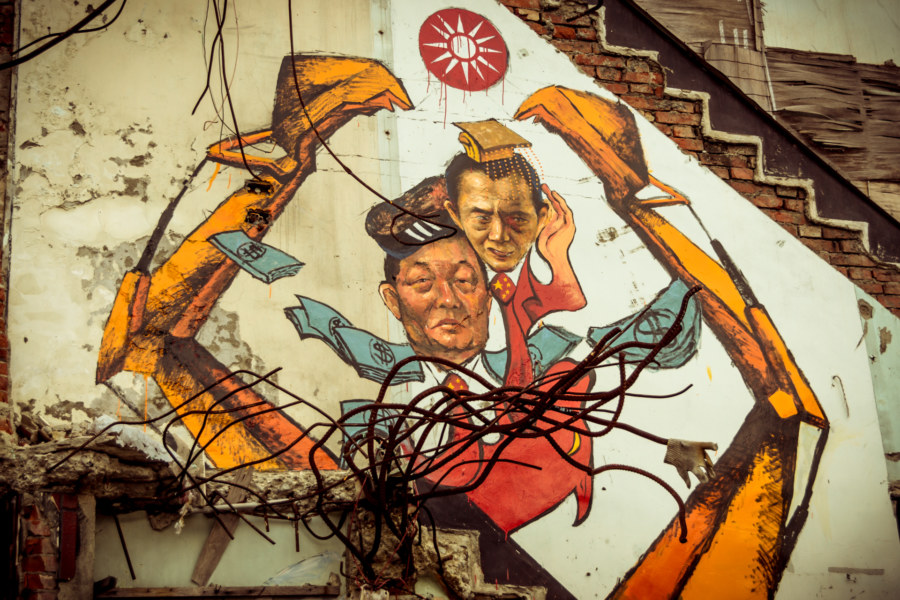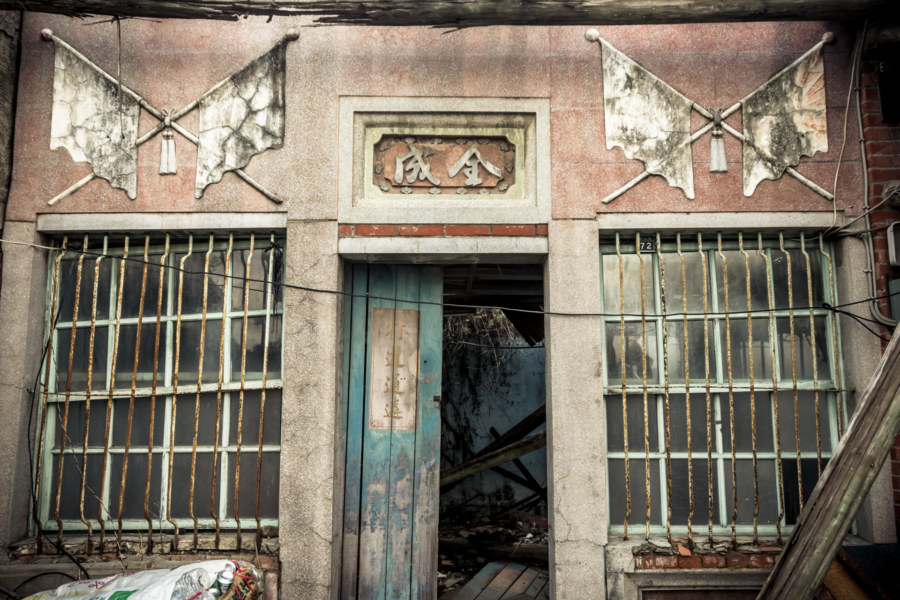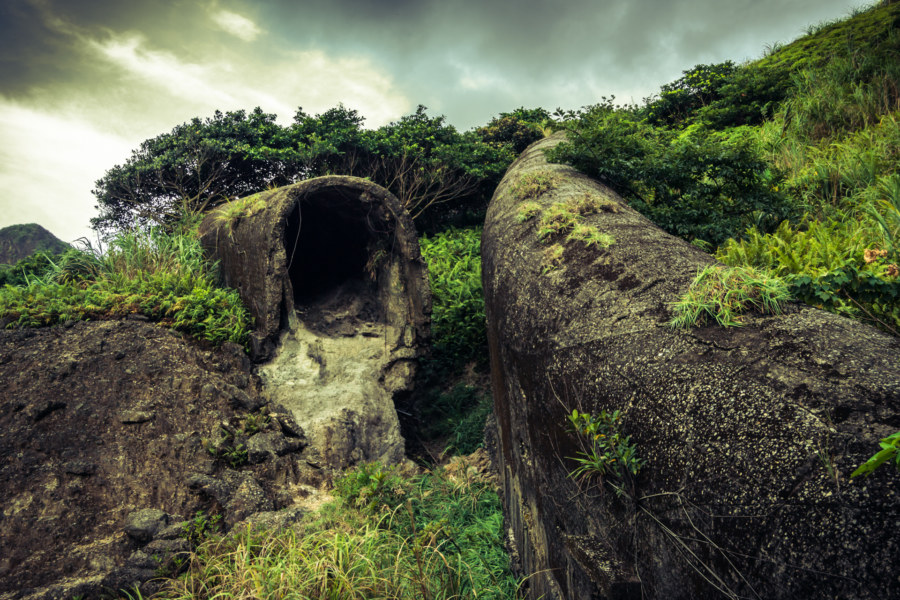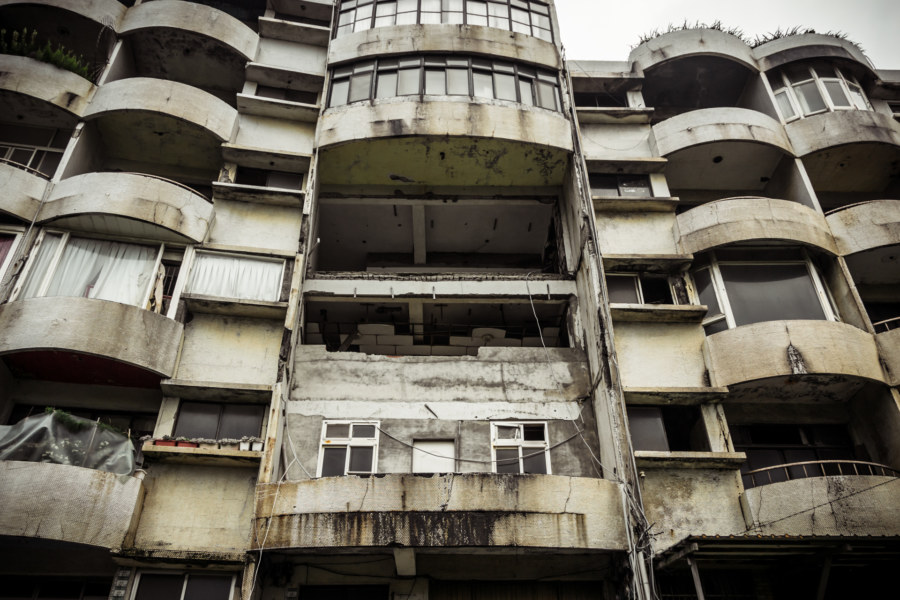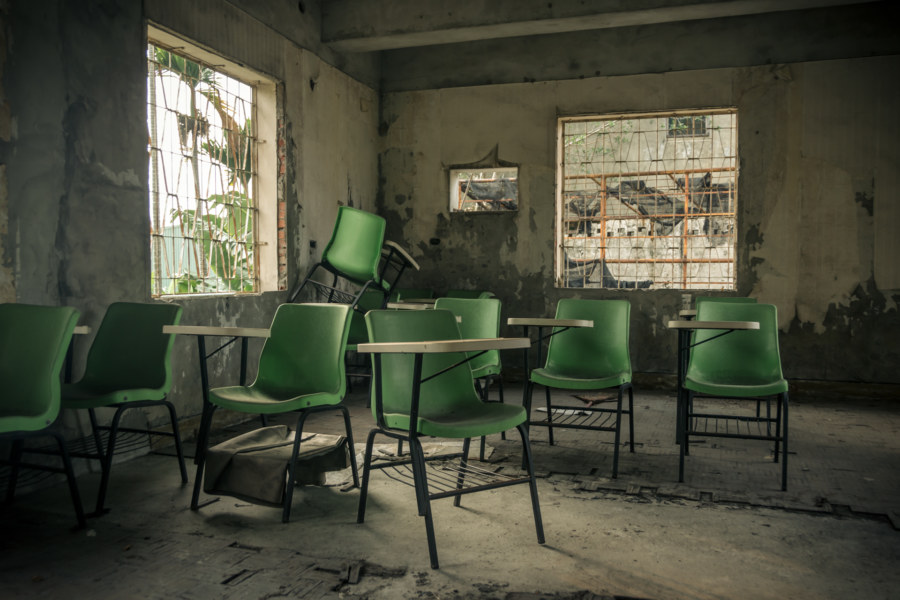Mere minutes after setting out from my hotel to explore Chiang Mai I stumbled upon a bizarre building in a mostly empty lot just inside the old city walls. I swear I don’t always go looking for abandoned places—sometimes they find me instead. And in this case I couldn’t very well say no, now could I? I walked up the stairs to take a closer look at this ostentatious ruin, the House of Success.
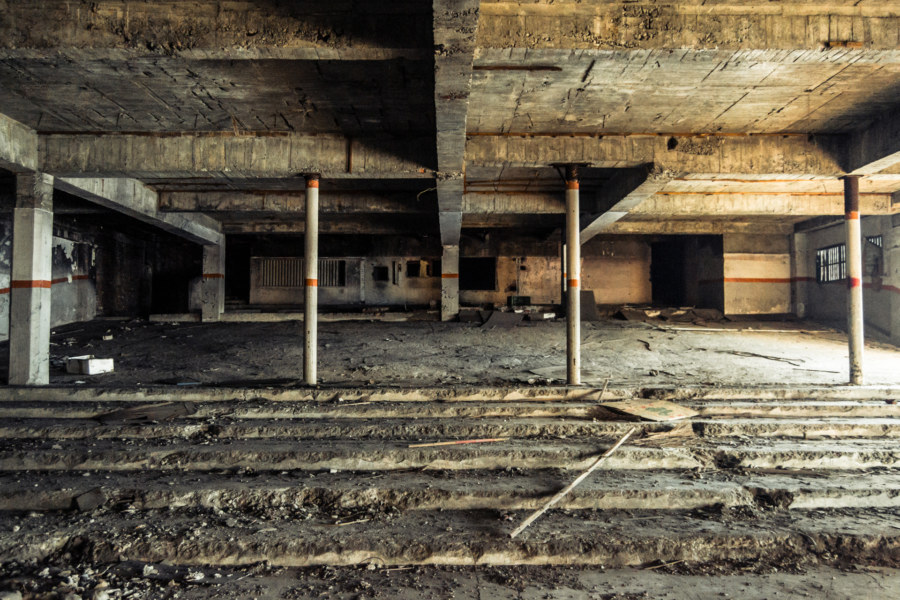
Urban exploration or urbex (Chinese: 城市探險 or 廢墟探險; Japanese: haikyo 廃墟) is the exploration of manmade structures and artificial environments, particularly those found beyond the margins of everyday society. This includes abandoned and disused spaces but also rooftops, underground infrastructure, and many other places not normally open to casual examination. Despite the name the practice is not limited to cities, nor is the focus exclusively on abandoned places. Urbex culture varies across the globe but one unifying convention most explorers adhere to is "take nothing but pictures, leave nothing but footprints".
Subterms
Postcards From Changhua City 1 彰化市明信片一號
I moved to Changhua City in November 2014 to see what it’s like living in a traditional town in central Taiwan. I had an interesting time staying in Tainan for three months earlier that year so I figured why not give Changhua a shot for the wintertime? Changhua is nowhere near as lively and interesting as Taiwan’s old southern capital but it is not without charm. Here I have gathered up some of the more representative images I captured during my first two months of residency, mostly of the area immediately to the east of the train station, which also happens to be the oldest part of town. Explanations are given in the caption of each photo, where available.
Dayeh Futian Temple 大葉福天宮
High on the upper slopes of the modest Bagua Mountain Range 八卦山脈 (pinyin: Bāguàshānmài) overlooking Dayeh University (pinyin: Dàyè), on the border between Changhua and Nantou in Taiwan, stands a strange half-abandoned temple. It is peculiar in that temples are almost never left to the elements the way this one has been. Abandoned buildings are commonplace in this land of abundant ruins—but even the most obscure temples receive regular maintenance in the form of incense and offerings, among other things. To neglect the gods and spirits is to curse a place with tremendously bad luck and misfortune. Temples may be formally decommissioned, dismantled, and destroyed—but they are almost never simply abandoned or left to decay like this. What’s going on here?
Tainan Chinatown 臺南中國城
Tainan Chinatown 臺南中國城 is a half-abandoned and soon to be demolished shopping mall and entertainment complex in Tainan City. Built in 1983, it was designed by C.Y. Lee, a famous architect who later directed the construction of 85 Sky Tower and Taipei 101. I went by to shoot a few photos with some friends one sunny afternoon in January 2014 so I figure I may as well share them here.
Vanilla Garden Minsu 香草園民宿
I was out riding a scooter from Changhua the hot springs resort town of Guanziling in rural Tainan when I noticed a rundown, seemingly abandoned building by the roadside in the mountains of Zhongpu, Chiayi. Stopping to investigate, I discovered a mínsù 民宿 (essentially a bed and breakfast) in the early stages of decay. Initially I had no luck finding out any information about this place but more recently I uncovered its formal name: Dòngzǐjiǎo Vanilla Garden Minsu 凍仔腳香草園民宿. Dongzijiao, apparently famous for its betel nut crop, is the name of the nearest village.
The Seeds of Unrest
Part of a mural by Taiwanese artist Liu Tsungjung 劉宗榮 in Dapu village.
Last night I went to Dapu Village in Zhunan, the northernmost township in Miaoli, for a concert and movie screening commemorating the treacherous demolition of four homes last year. The event took place on the former site of Chang Pharmacy, whose owner, Chang Sen-wen (張森文), was later found dead in a drainage ditch in an apparent suicide. This occurred not long after the government razed his home and business to the ground with all his possessions still inside. In a cruel twist of fate the Chang family was served a bill for demolition equalling the financial compensation offered by the government—leaving them with absolutely nothing. Eminent domain may serve the public interest in special circumstances—but this was outright robbery by the state.
The Dapu incident1, in brief: Miaoli magistrate Liú Zhènghóng (劉政鴻, pictured above, at left) ordered the expropriation of 156 hectares of land in Dapu Village in 2009, ostensibly to build a new…
Gushan Village Old Homes 姑山里老屋
I was off the main road in Gūshān Village 姑山里 in Dashu, a hilly rural district in Kaohsiung, when I noticed a row of old buildings next to a small temple. Stopping to investigate, I unslung my camera and snapped a few shots, not quite realizing what I was looking at. My mind was elsewhere—a consequence of two hard days of riding in the tropical summer sun. I was, at the time, heading south to the railway line after making it to Qishan the night before and touring through Meinong earlier in the day. Only later, when I went to develop the photos, did I notice the faint traces of the Japanese rising sun flag in the top right corner of the building pictured above. At one point these stone flags must have been painted bright red, a reflection of Japanese imperial interests in Taiwan.
Changren Waste Flues 長仁廢煙道
The waste flues of Ruifang are an extraordinary sight. The ruins of these massive, crumbling conduits run for miles up the mountainside from the Shuinandong Smelter 水湳洞精鍊廠 and the rest of the abandoned mining complex below. Originally built during the KMT authoritarian era to transport noxious fumes and waste gases away from the refinery—and nearby settlements like Jīnguāshí 金瓜石—these flues are reputedly the longest in the world.
Harbour City 海灣新城
Harbour City 海灣新城 is an imposing ruin sprawling along the coastline not far from Cape Fugui 富貴角 at the northernmost tip of Taiwan. I first noticed it on my round-the-island bicycle tour last year but did not stop to explore, having already spent much of my daylight riding time poking around the UFO houses of Wanli.
More recently I set out on a two-day urban exploration road trip with a friend from the Netherlands. Late in the afternoon on the first day we were thrown out of an abandoned amusement park in nearby Jinshan. Not having anything better to do with the remaining hour or so of daylight, I suggested we make our way up the coast to Shimen to investigate the ruin I had seen the previous year.
Wufeng Minsheng Clinic 霧峰民生診所
On the way back from the 921 Earthquake Museum 九二一地震教育園區 in early 2014 I noticed an abandoned building at the side of the highway in rural Wufeng. Stopping to investigate, at first I assumed it must have once operated as a bǔxíbān 補習班, or cram school, a common feature of the social landscape here in Taiwan, but that initial hypothesis turned out to be completely wrong. Years later it was brought to my attention that this was originally Mínshēng Clinic 霧峰民生診所, the office of a country doctor by the name of Lín Péngfēi 林鵬飛. He passed away several years ago, leading to the abandonment of the clinic. More recently it was purchased by local farmers, completely renovated, and has reopened as a small museum and community center, the Wufeng Minsheng Story House 霧峰民生故事館.
